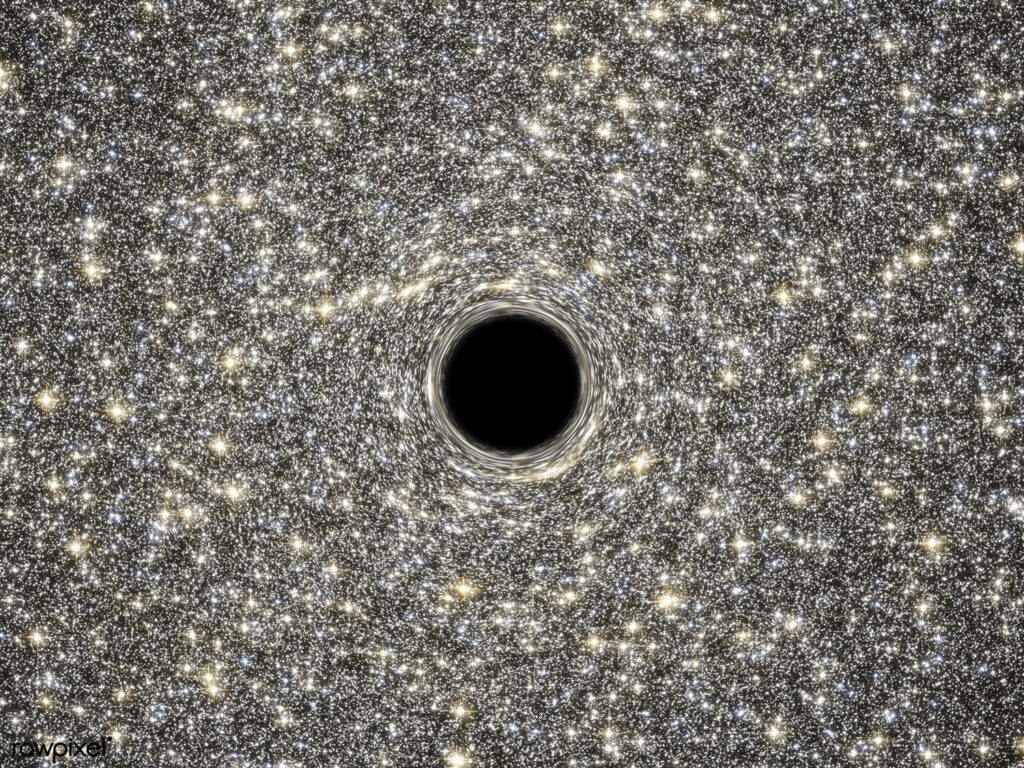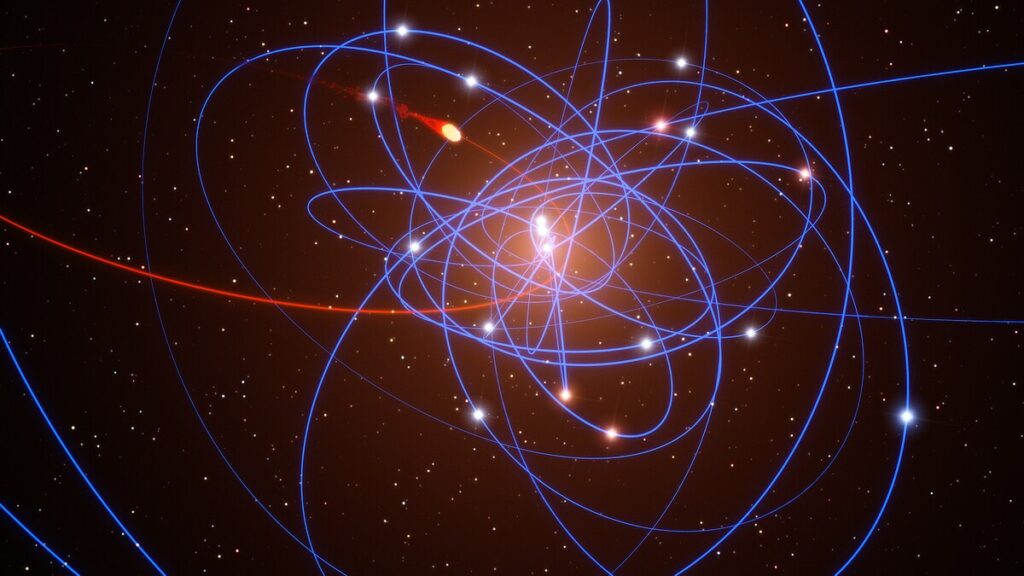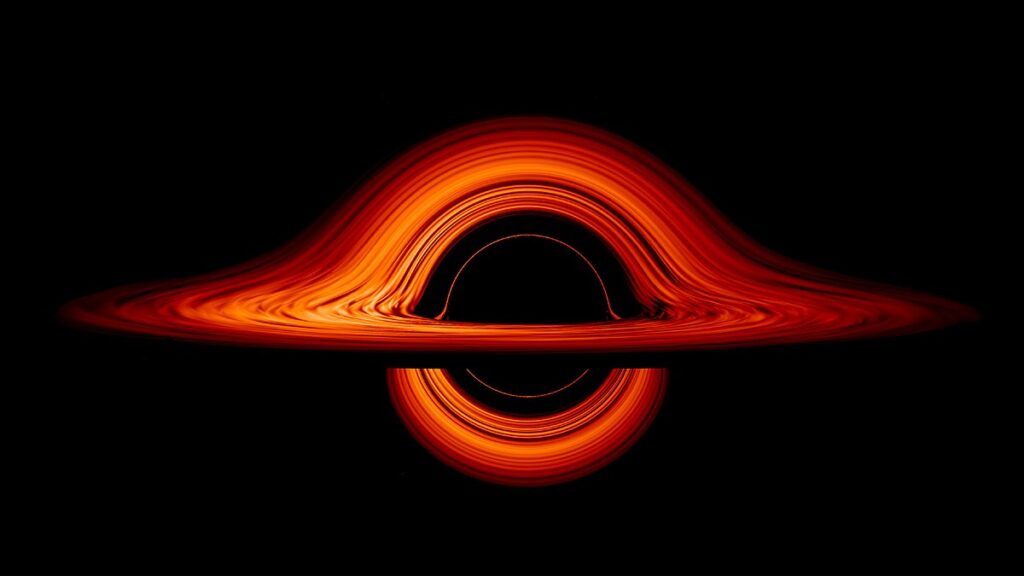Black holes are the result of the spectacular death throes of massive stars. To understand how a black hole is formed, we must first grasp the concept of stellar evolution, the life cycle of a star.
Stars are born from vast clouds of gas and dust, and their ultimate fate is intricately linked to their mass.
Star Formation
The journey towards black hole formation begins with the gravitational collapse of a massive cloud of molecular gas and dust. Under the influence of gravity, this cloud contracts and forms a dense core.
As this core becomes more compact, it heats up and eventually reaches a critical temperature and density, initiating nuclear fusion reactions. This is the reason for the birth of a star.
Stellar Life Cycle
The subsequent evolution of a star is determined primarily by its mass. For the purpose of black hole formation, we will focus on massive stars, those with masses several times greater than our Sun.
Massive stars lead short but intense lives compared to their smaller counterparts. The core of a massive star serves as the crucible for nuclear fusion, where hydrogen atoms combine to form helium through a series of fusion reactions.
This process releases an enormous amount of energy, which counteracts the gravitational force trying to compress the star further.
Over millions of years, massive stars continue to burn through various nuclear fuels, producing increasingly heavier elements, such as carbon, oxygen, and eventually iron, at their cores. This iron, however, is a turning point in the star’s evolution.

The Iron Core and Stellar Death
Iron is unique because it cannot be further fused to release energy in a stable manner. When a massive star’s core accumulates a significant amount of iron, it reaches a critical mass limit.
At this point, the core can no longer sustain the outward pressure generated by nuclear fusion, and gravitational forces take over.
The star’s core collapses rapidly, as if it were a building imploding, in a fraction of a second. The core’s inward motion creates an intense shockwave that moves outward, causing the star to undergo a supernova explosion, one of the most energetic events in the universe.
This explosion releases a tremendous amount of energy, briefly outshining entire galaxies and scattering heavy elements into space. Furthermore, the remains after the explosion depend upon the mass of the star.
Black Hole Formation
For the formation of a black hole, the remnants of the massive star must be particularly massive.
If the core mass is above a certain critical value (approximately three times the mass of our Sun), it will continue to collapse even after the supernova explosion. This relentless gravitational collapse leads to the formation of a black hole.
Here’s the process in more detail.
- Core Collapse – The core of the massive star, after the supernova explosion, collapses under its own gravity. This compression is relentless and unstoppable.
- Singularity Formation – As the core continues to collapse, it eventually reaches a point of infinite density known as a singularity. At this singularity, the laws of physics as we understand them break down, and the core becomes a gravitational point of no return.
- Event Horizon – The singularity is surrounded by an invisible boundary called the event horizon. This is the point at which escape from the black hole’s gravitational pull becomes impossible. Things that cross this boundary are trapped within the black hole.
- The Black Hole – The region within the event horizon is the black hole itself. It has a gravitational pull so strong that not even light can escape, which is why it appears “black.” This is what makes black holes mysterious and virtually invisible to direct observation.

Types of Black Holes
Black holes can be categorized into three main types based on their mass.
1. Stellar-Mass Black Holes
These black holes form from the remnants of massive stars and typically have a mass range of a few to several tens of times that of the Sun.
They are relatively common and are often discovered in binary systems, where they accrete matter from a companion star, emitting X-rays in the process.
2. Intermediate-Mass Black Holes
The intermediate black holes have a mass in the range of hundreds to thousands of solar masses. Their formation is still a subject of ongoing research, but they could be formed from the mergers of smaller black holes or by accreting gas over a long period.
3. Supermassive Black Holes
These are the behemoths of the black hole world, with masses millions to billions of times that of our Sun.
They are typically found at the centers of galaxies, including our Milky Way. The exact process of their formation is a subject of active research. It is likely to involve the gradual accretion of mass and mergers of smaller black holes.

The Bottom Line
Black holes are formed through the violent and awe-inspiring process of stellar evolution, specifically in the case of massive stars. The life cycle of a massive star culminates in a supernova explosion. If the core mass is sufficiently large, it continues to collapse. Moreover, it forms a black hole with a singularity at its core, surrounded by an event horizon.
These cosmic entities, though mysterious and elusive, play a vital role in our understanding of the universe’s structure and the laws of physics in extreme conditions.
The study of black holes remains an exciting and active field of research in science, as it promises to unravel the deepest mysteries of the cosmos, from the nature of singularities to the behavior of matter and energy in the most extreme gravitational environments.






